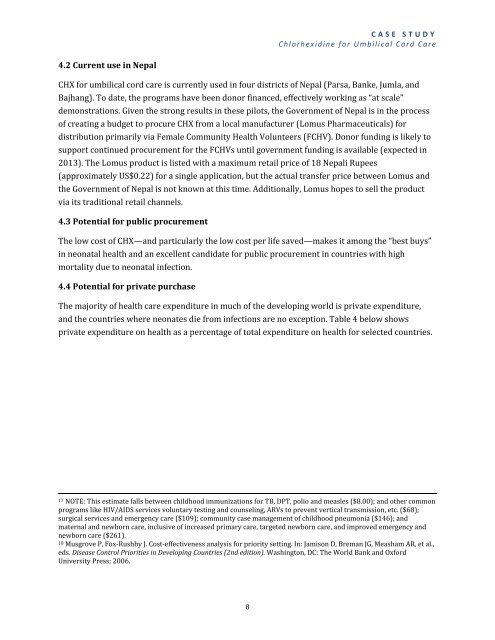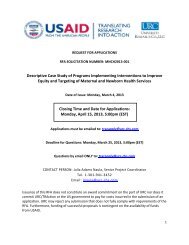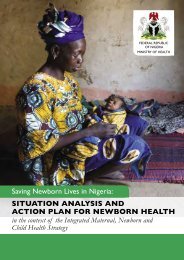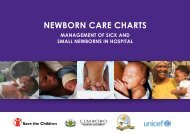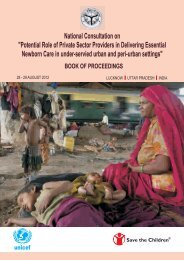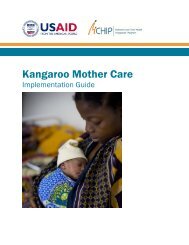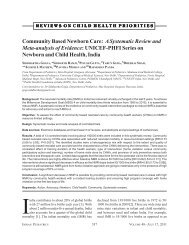Chlorhexidine for Umbilical Cord Care - Healthy Newborn Network
Chlorhexidine for Umbilical Cord Care - Healthy Newborn Network
Chlorhexidine for Umbilical Cord Care - Healthy Newborn Network
- No tags were found...
You also want an ePaper? Increase the reach of your titles
YUMPU automatically turns print PDFs into web optimized ePapers that Google loves.
CASE STUDY<strong>Chlorhexidine</strong> <strong>for</strong> <strong>Umbilical</strong> <strong>Cord</strong> <strong>Care</strong>4.2 Current use in NepalCHX <strong>for</strong> umbilical cord care is currently used in four districts of Nepal (Parsa, Banke, Jumla, andBajhang). To date, the programs have been donor financed, effectively working as “at scale”demonstrations. Given the strong results in these pilots, the Government of Nepal is in the processof creating a budget to procure CHX from a local manufacturer (Lomus Pharmaceuticals) <strong>for</strong>distribution primarily via Female Community Health Volunteers (FCHV). Donor funding is likely tosupport continued procurement <strong>for</strong> the FCHVs until government funding is available (expected in2013). The Lomus product is listed with a maximum retail price of 18 Nepali Rupees(approximately US$0.22) <strong>for</strong> a single application, but the actual transfer price between Lomus andthe Government of Nepal is not known at this time. Additionally, Lomus hopes to sell the productvia its traditional retail channels.4.3 Potential <strong>for</strong> public procurementThe low cost of CHX—and particularly the low cost per life saved—makes it among the “best buys”in neonatal health and an excellent candidate <strong>for</strong> public procurement in countries with highmortality due to neonatal infection.4.4 Potential <strong>for</strong> private purchaseThe majority of health care expenditure in much of the developing world is private expenditure,and the countries where neonates die from infections are no exception. Table 4 below showsprivate expenditure on health as a percentage of total expenditure on health <strong>for</strong> selected countries.17 NOTE: This estimate falls between childhood immunizations <strong>for</strong> TB, DPT, polio and measles ($8.00); and other commonprograms like HIV/AIDS services voluntary testing and counseling, ARVs to prevent vertical transmission, etc. ($68);surgical services and emergency care ($109); community case management of childhood pneumonia ($146); andmaternal and newborn care, inclusive of increased primary care, targeted newborn care, and improved emergency andnewborn care ($261).18 Musgrove P, Fox‐Rushby J. Cost‐effectiveness analysis <strong>for</strong> priority setting. In: Jamison D, Breman JG, Measham AR, et al.,eds. Disease Control Priorities in Developing Countries (2nd edition). Washington, DC: The World Bank and Ox<strong>for</strong>dUniversity Press; 2006.8


